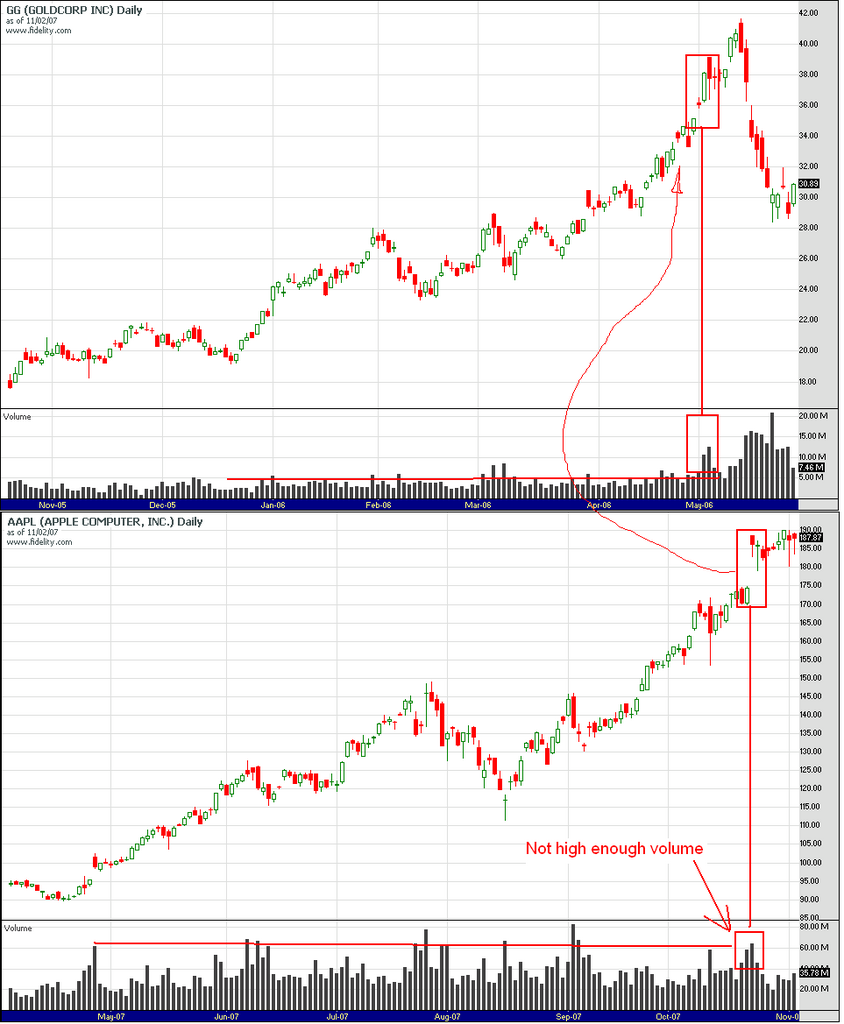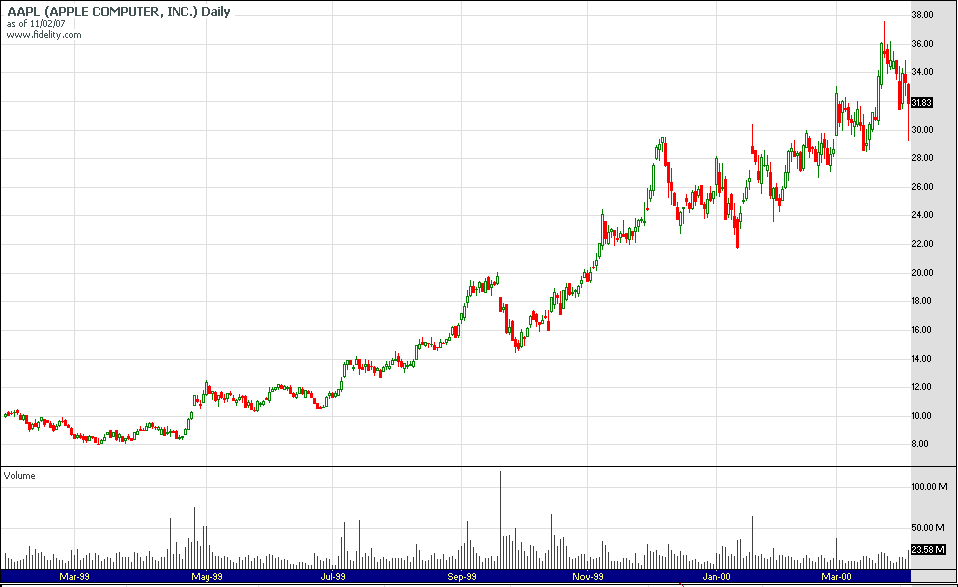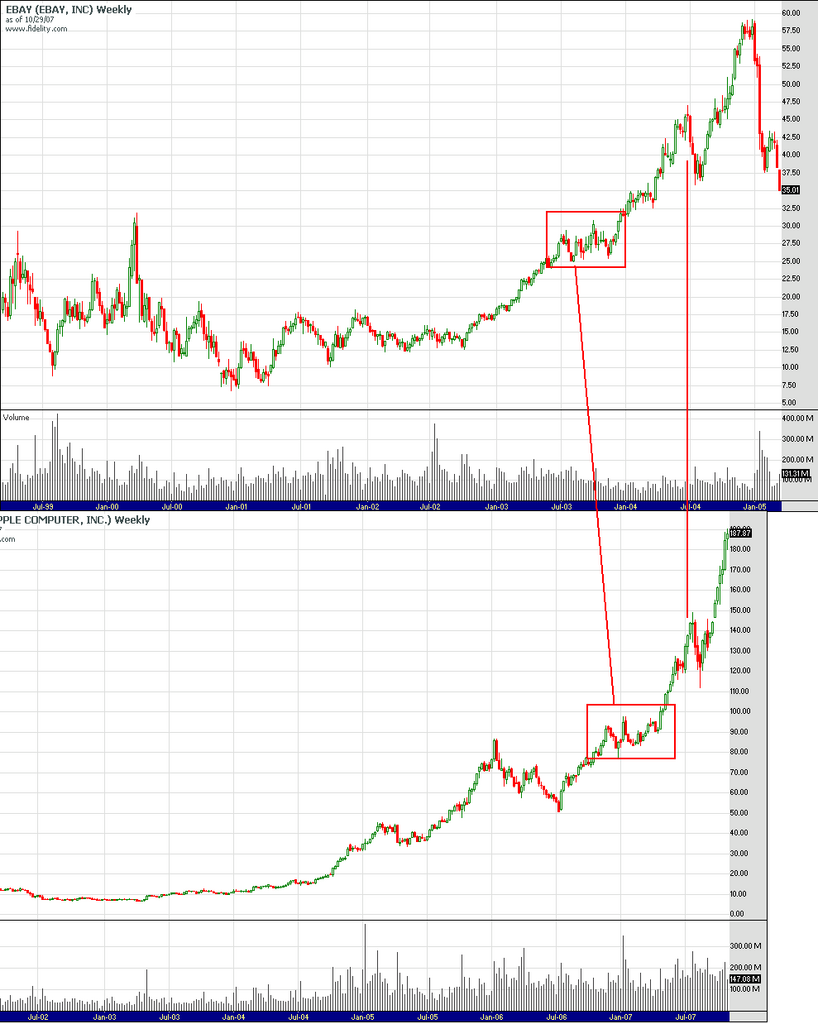
In this particular case (AAPL vs AAPL), it did not...

Edited by dcengr, 03 November 2007 - 04:26 PM.

Posted 03 November 2007 - 04:24 PM


Edited by dcengr, 03 November 2007 - 04:26 PM.
Posted 03 November 2007 - 04:30 PM
Posted 03 November 2007 - 04:30 PM
Newton's Second Law of Motion states:It could also be that parabolics are all naturally different and they do not share a characteristic that one can use to tell when each of them will die.
"The rate of change of momentum of an object (or a price pattern's price) is directly proportional to the resultant force (or money flow) acting on it."
Don't forget to include inverted parabola patterns as well...it's not just a one way street.I need to find me some more parabolic stocks and do some comparisons.
Fib
Posted 03 November 2007 - 04:33 PM
Edited by beta, 03 November 2007 - 04:36 PM.
Posted 03 November 2007 - 04:43 PM

Posted 03 November 2007 - 04:51 PM
Newton's Third Law of Motion states:it seems that often, the end of a parabolic move is marked by an extreme spike in buying volume followed by a spike in selling volume
Better to ignore me than abhor me.
“Wise men don't need advice. Fools won't take it” - Benjamin Franklin
"Beware of false knowledge; it is more dangerous than ignorance" - George Bernard Shaw
Demagogue: A leader who makes use of popular prejudices, false claims and promises in order to gain power.
Technical Watch Subscriptions
Posted 03 November 2007 - 06:56 PM
Posted 03 November 2007 - 07:00 PM
Edited by ogm, 03 November 2007 - 07:07 PM.
Posted 03 November 2007 - 07:23 PM
"For every force acting on an object (or a price pattern's structure), the object will exert an equal, yet opposite, force on its cause."
Edited by beta, 03 November 2007 - 07:29 PM.
Posted 03 November 2007 - 07:46 PM
Edited by ogm, 03 November 2007 - 07:52 PM.